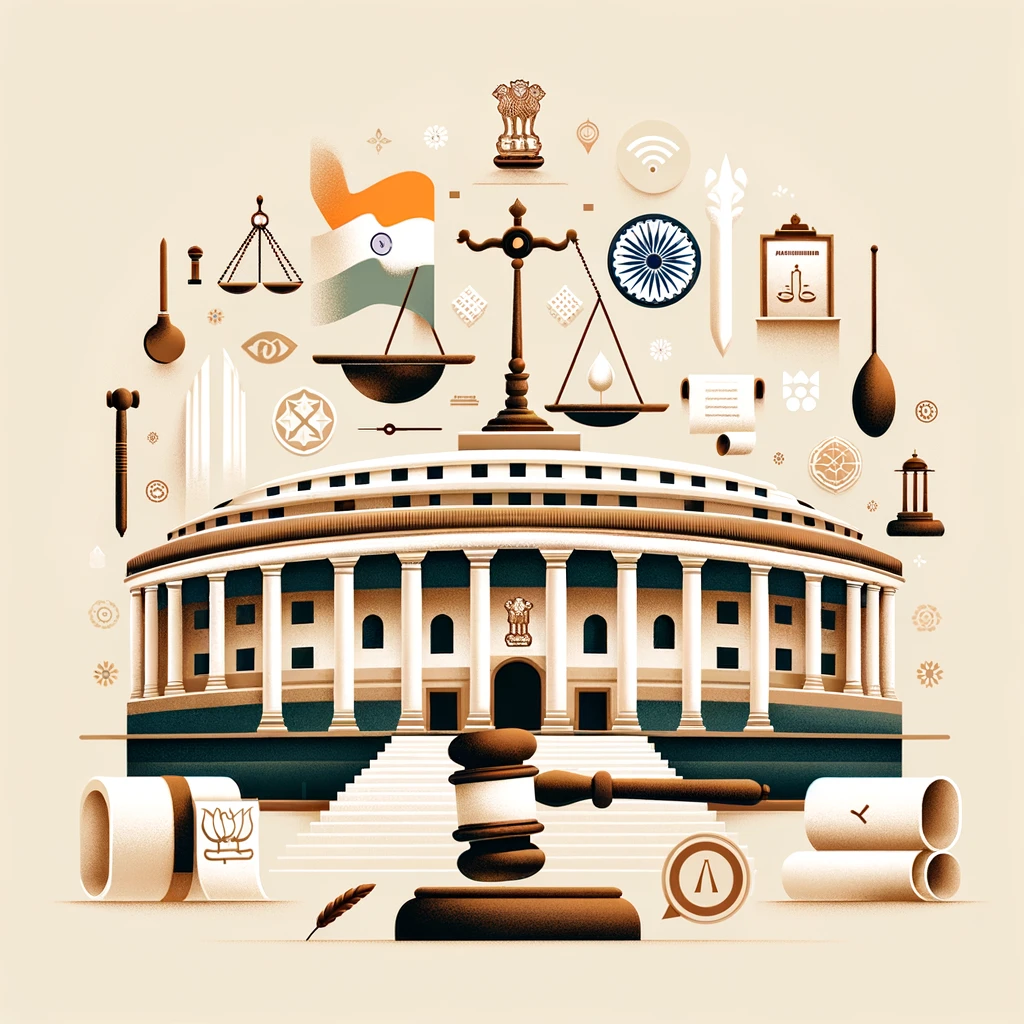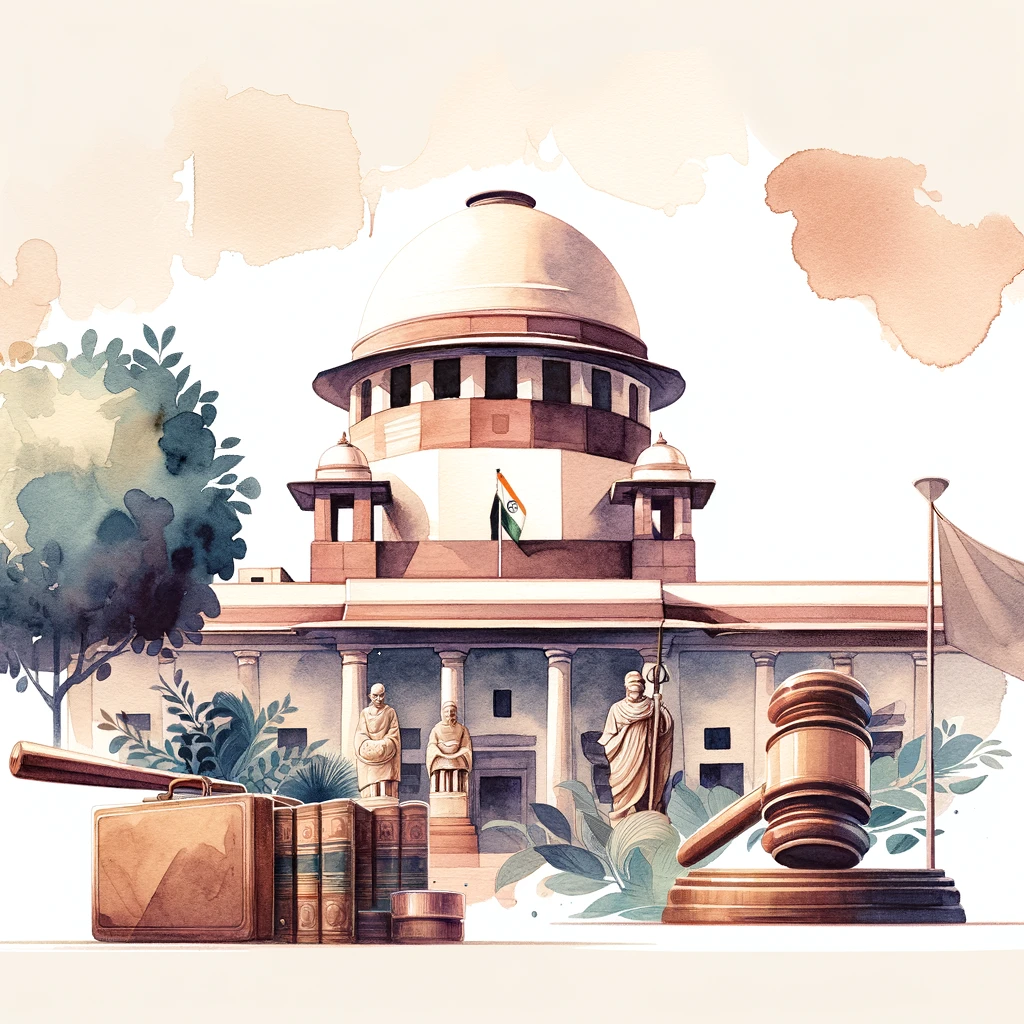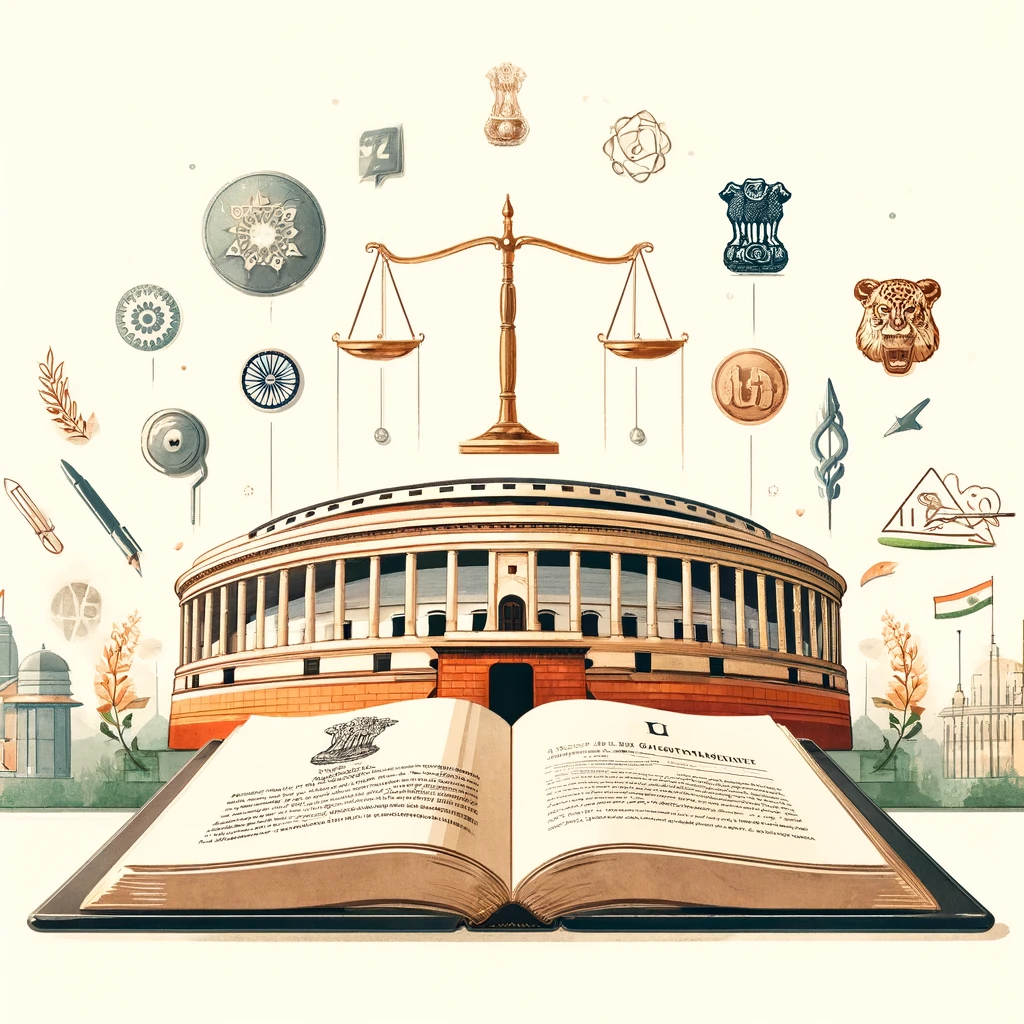NJAC is a body that was proposed by the government of India. It undertakes the task of recruitment, appointment, and transfer of judicial officers, legal officers, and legal employees working under the central government and state governments of India. It came into existence after amending the provisions in Article. 124 of the Indian Constitution through the 99th amendment act in 2014.
- The NJAC act will recommend the Supreme Court judge with the most experience as Chief Justice of India. This is true as long as he is thought to be fit for the job.
- Although the NJAC was deemed unconstitutional, a closer examination of the collegium system reveals its evolution from landmark cases rather than a constitutional mention.

Establishment of NJAC Act
The 99th Constitutional Amendment, enacted in 2014, aimed to reform the existing collegium system of judicial appointments.
- Objective: The amendment sought to introduce transparency and accountability in the process of appointing judges to the higher judiciary by establishing the National Judicial Appointments Commission (NJAC).
- Legislative Backing: Alongside the constitutional amendment, the NJAC Act was passed to operationalize the commission, intending to replace the collegium system that had been criticized for its opaqueness and lack of accountability.
The 99th Amendment was a significant move towards overhauling the judicial appointments process, reflecting the government’s commitment to judicial reforms.
Provisions of the NJAC Act: Composition and Functions
The NJAC Act outlined the composition and functions of the National Judicial Appointments Commission.
Composition
The NJAC was to consist of six members:
- The Chief Justice of India (CJI) is the ex-officio Chairperson.
- Two senior-most Supreme Court judges next to the CJI.
- The Union Minister of Law and Justice.
- Two eminent persons were nominated by a committee comprising the CJI, the Prime Minister, and the Leader of the Opposition in the Lok Sabha.
Functions
The NJAC was tasked with:
- Recommending appointments and transfers of judges of the Supreme Court and High Courts.
- Ensuring that the criteria of ability, merit, and other factors were taken into account in the selection process.
- Recommending persons for appointment as Chief Justices of the High Courts and the Supreme Court.
These provisions aimed to democratize the appointment process, involving both judicial and executive members.
Supreme Court’s Verdict on NJAC: Declaring NJAC Unconstitutional
In October 2015, the Supreme Court delivered a landmark verdict in the case of Supreme Court Advocates-on-Record Association v. Union of India, declaring the NJAC unconstitutional.
- Judgment: The five-judge Constitution Bench, by a majority of 4:1, struck down the 99th Amendment and the NJAC Act, restoring the collegium system.
- Rationale: The Court held that the NJAC violated the basic structure of the Constitution, particularly the independence of the judiciary. The inclusion of the Law Minister and eminent persons in the NJAC was seen as a potential threat to judicial independence due to possible executive interference.
The verdict underscored the Court’s commitment to maintaining the independence of the judiciary as a core constitutional principle.

Independence of Judiciary vs Executive Interference
The NJAC faced significant opposition primarily due to concerns over the independence of the judiciary.
- Judicial Independence: Critics argued that the NJAC would undermine judicial independence by allowing executive influence in the appointment process. The presence of the Law Minister and eminent persons, potentially appointed by the government, was seen as compromising the autonomy of the judiciary.
- Executive Interference: There was a fear that the executive could exert undue influence over judicial appointments, which could lead to biased or politically motivated selections, eroding public confidence in the judiciary.
Impact on Judicial Appointments: Collegium System vs NJAC
The debate over the NJAC highlighted the pros and cons of the collegium system and the proposed NJAC model.
| System | Pros | Cons |
|---|---|---|
| Collegium System | Ensures judicial independence, as the judiciary itself controls appointments. | Criticized for lack of transparency, accountability, and inclusiveness, with decisions often perceived as opaque and arbitrary. |
| NJAC Model | Proposed to bring transparency and accountability, with a more inclusive approach involving both the judiciary and the executive. | Potential risk of executive interference and undermining judicial independence. |
Future of Judicial Reforms: Ongoing Debates and Proposed Changes
The debate over judicial appointments is far from settled, with ongoing discussions about possible reforms.
Need for Reform: There is a broad consensus that the collegium system needs improvements to enhance transparency and accountability without compromising judicial independence.
Proposed Changes: Various suggestions have been made, including:
- Greater transparency in the collegium’s decision-making process.
- Setting clear criteria and procedures for appointments.
- Involving a wider array of stakeholders without diluting judicial independence.
Conclusion
The 99th Amendment and the NJAC Act represented a bold attempt to reform the judicial appointments process in India. Despite being struck down by the Supreme Court, the issues raised during the debate highlight the need for a transparent, accountable, and independent judiciary. For UPSC aspirants, understanding this critical episode in India’s constitutional history is essential for grasping the complexities of judicial reforms and the ongoing efforts to balance independence with accountability in the judicial appointments process.
| NJAC Act UPSC Notes |
| 1. NJAC was to introduce changes in the sphere of judicial appointments consequent to the 99th Constitutional Amendment in 2014. 2. The aims behind the creation of NJAC were, among others, the bringing of more transparency and accountability in judges’ appointment, as against the existing collegium system that was non-transparent. 3. It consisted of the Chief Justice of India, two senior Supreme Court judges, one Law Minister, and two eminent persons. 4. In 2015, the Supreme Court held NJAC unconstitutional and thus restored the collegium system. 5.The presence of executive members in NJAC also raised apprehensions about undermining judicial independence. 6. NJAC aimed at being more transparent than the collegium system; however, it became prone to criticism on lines of possible interference by the executive. 7. Improvement in the Collegium System for more transparency without compromising on independence is debated continuously. |


